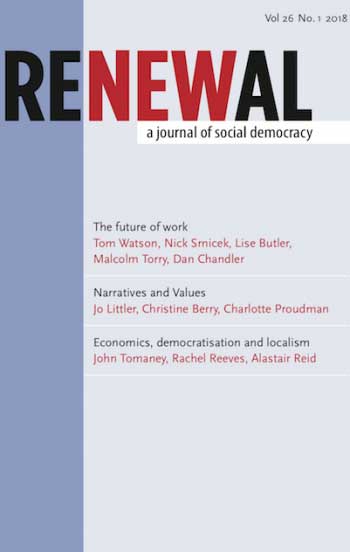
Improving the quality of work
Renewal - Print ISSN 0968-5211 - Online ISSN
Volume 26 Number 1 (2018)
Improving the quality of work
Tom Watson
Abstract
When Mary Shelley wrote the preface to Frankenstein in 1831, the industrial revolution was at its height and society was being transformed by scientific developments that were taking place at a dizzying pace. In Victor Frankenstein, Shelley created a character whose enthusiasm for technological advancement and messianic determination to push the boundaries of the possible embodied the spirit of the age. But the ‘uneasy, half-vital’ being that Victor’s experiment creates turns out to be a monster. Frankenstein is the most famous literary expression of the unease Shelley and her contemporaries felt about the threat scientific advances posed for traditional human society.
Today, a fear similar to the one articulated so powerfully by Shelley is rooted in the belief that ‘half-vital’ robots will invade the workforce, take our jobs and render us redundant in a more fundamental way than simply making many of us unemployed. What societal function will we fulfil when work is carried out by someone – or something – else? How can we prepare for the changes that technological revolution will bring? Can we harness this change in order to build a fairer and more equitable society in which good work pays and bad work – including work which is less well paid, routine or mundane – is taken care of by algorithms and artificial intelligence.
To cite this article
Tom Watson (2018) Improving the quality of work, Renewal, 26(1)
